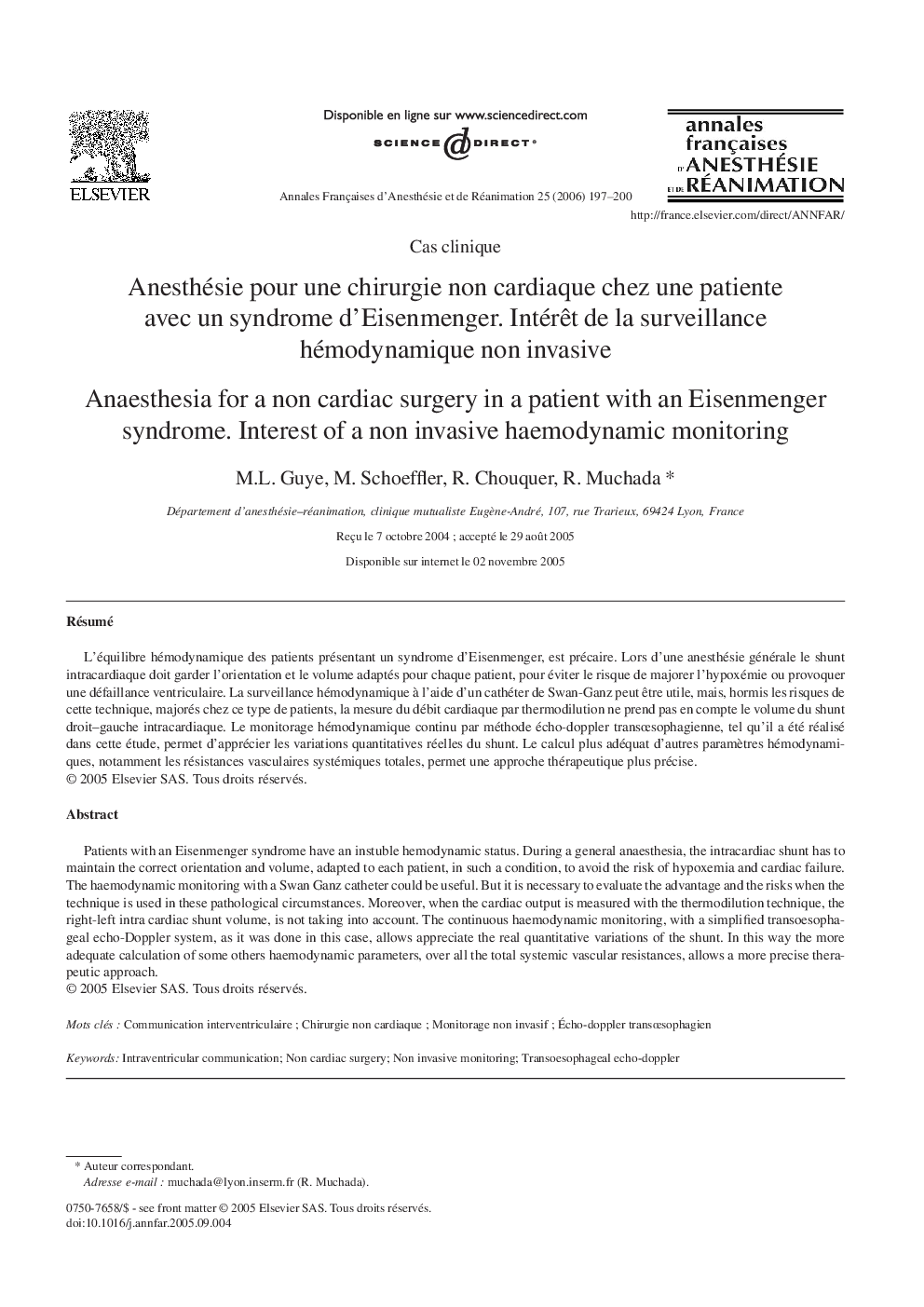| کد مقاله | کد نشریه | سال انتشار | مقاله انگلیسی | نسخه تمام متن |
|---|---|---|---|---|
| 2748293 | 1148971 | 2006 | 4 صفحه PDF | دانلود رایگان |

RésuméL'équilibre hémodynamique des patients présentant un syndrome d'Eisenmenger, est précaire. Lors d'une anesthésie générale le shunt intracardiaque doit garder l'orientation et le volume adaptés pour chaque patient, pour éviter le risque de majorer l'hypoxémie ou provoquer une défaillance ventriculaire. La surveillance hémodynamique à l'aide d'un cathéter de Swan-Ganz peut être utile, mais, hormis les risques de cette technique, majorés chez ce type de patients, la mesure du débit cardiaque par thermodilution ne prend pas en compte le volume du shunt droit–gauche intracardiaque. Le monitorage hémodynamique continu par méthode écho-doppler transœsophagienne, tel qu'il a été réalisé dans cette étude, permet d'apprécier les variations quantitatives réelles du shunt. Le calcul plus adéquat d'autres paramètres hémodynamiques, notamment les résistances vasculaires systémiques totales, permet une approche thérapeutique plus précise.
Patients with an Eisenmenger syndrome have an instuble hemodynamic status. During a general anaesthesia, the intracardiac shunt has to maintain the correct orientation and volume, adapted to each patient, in such a condition, to avoid the risk of hypoxemia and cardiac failure. The haemodynamic monitoring with a Swan Ganz catheter could be useful. But it is necessary to evaluate the advantage and the risks when the technique is used in these pathological circumstances. Moreover, when the cardiac output is measured with the thermodilution technique, the right-left intra cardiac shunt volume, is not taking into account. The continuous haemodynamic monitoring, with a simplified transoesophageal echo-Doppler system, as it was done in this case, allows appreciate the real quantitative variations of the shunt. In this way the more adequate calculation of some others haemodynamic parameters, over all the total systemic vascular resistances, allows a more precise therapeutic approach.
Journal: Annales Françaises d'Anesthésie et de Réanimation - Volume 25, Issue 2, February 2006, Pages 197–200